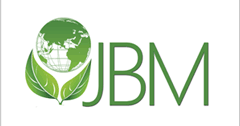Abstract
Bovine tuberculosis (bTB) is zoonotic disease of global concern, affecting both animal and human populations. To estimate the prevalence of bovine TB in District Dera Ismail Khan and identify associated risk factors. A total of 138 cattle from different herds were included in the survey, and diagnostic tests, including the tuberculin skin test and Ziehl Neelsen stain, were employed. The results revealed a high prevalence of bovine TB, with an estimated prevalence of 10.87 % in the study area. Prevalence analysis based on tehsils revealed varying rates: 6.66 % in Dera Ismail Khan, 11.11 % in Kulachi, and 14.81 % in Daraban and Paroa. Paharpur had a prevalence of 7.40 %. The overall district prevalence was 10.87 %. Age-wise prevalence showed no significant difference, with 10 % in calves (<1 year) and 9.33 % in 1-3-year-olds. Prevalence in cattle over 3 years was 13.95 %. Sex-wise prevalence showed no significant difference between male (10 %) and female (12.38 %) cows (p > 0.05). Seasonal prevalence indicated 10 % in spring, 6.06 % in summer, 11.11 % in autumn, and 27.27 % in winter (highest prevalence) (p < 0.05). Overcrowding of animals and inadequate biosecurity measures were significantly associated with higher prevalence rates (p < 0.05). Herd size and presence of co-infections showed no significant correlation with bovine TB prevalence (p > 0.05). This study found a high prevalence of bTB in District Dera Ismail Khan and identified overcrowding of animals and inadequate biosecurity measures as significant risk factors for disease transmission.
Article History
Received: Nov 03, 2023; Accepted: Jul 08, 2024; Published: Sep 30, 2024
Recommended Citation
Khan, A.,
Ali, A.,
Aimen, U. e.,
Ullah, W.,
Khan, I.,
Ullah, Q.,
Hussain, B.,
& Rahman, M.
(2024).
Estimation of Bovine Tuberculosis Prevalence, Associated Risk Factors, and Public Health Significance in District Dera Ismail Khan,
Journal of Bioresource Management, 11
(3).





